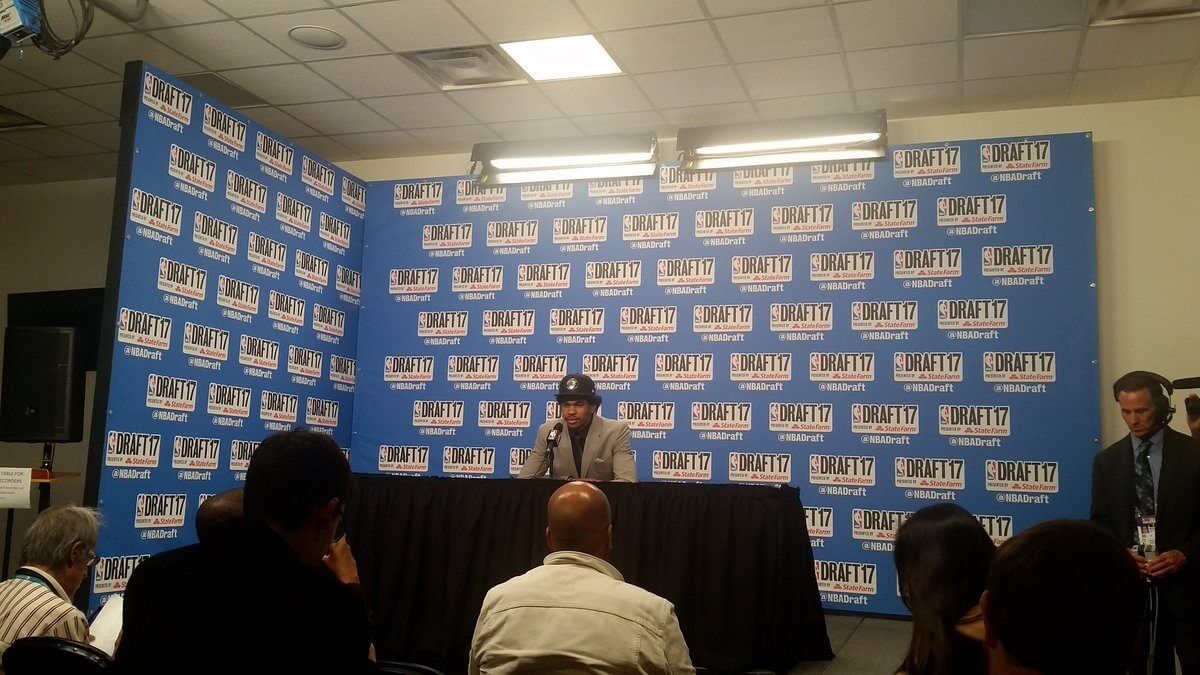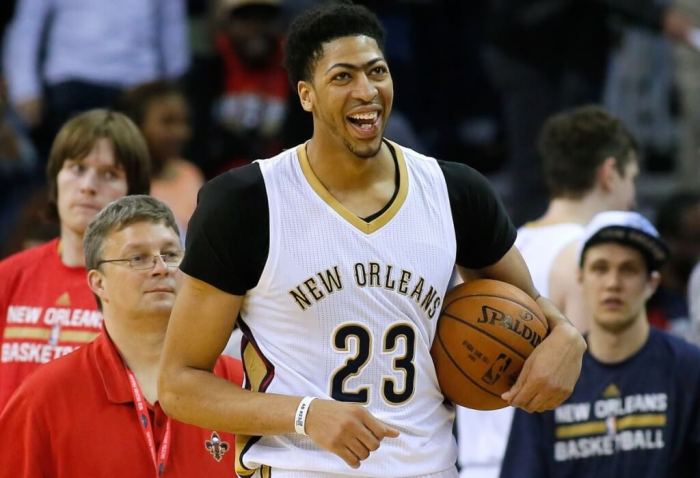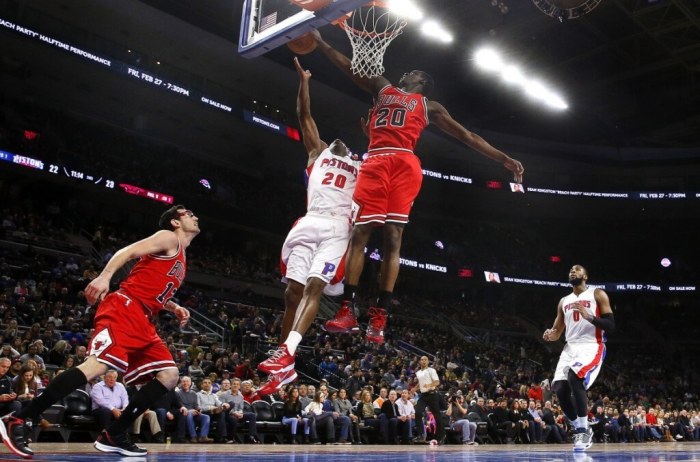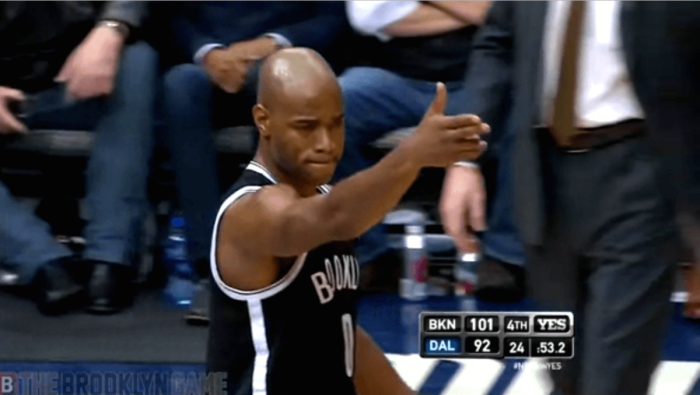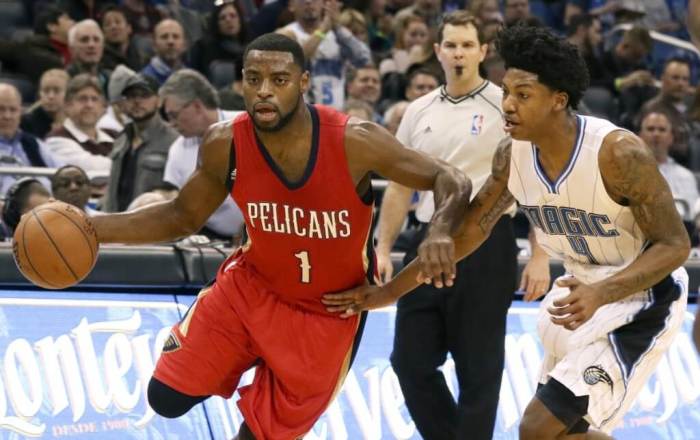The Brooklyn Nets selected Jarrett Allen with the 22nd pick in Thursday’s NBA Draft. After trading the 27th pick in the D’Angelo Russell deal, it became even more important for Marks and his staff to find a gem with the team’s other pick in the 20s. The Nets, at the very least, gave themselves an opportunity to find that by selecting a big man who possesses an extremely high ceiling.
Allen posted 13.3 points and 8.4 rebounds per game for the Texas Longhorns in his only season in Austin. However, he showed drastic improvement as the season rolled along. The Texas native averaged 16.2 points and 9.8 boards over 18 games during Big-12 conference play. This translates to a double-double per 40 minutes.
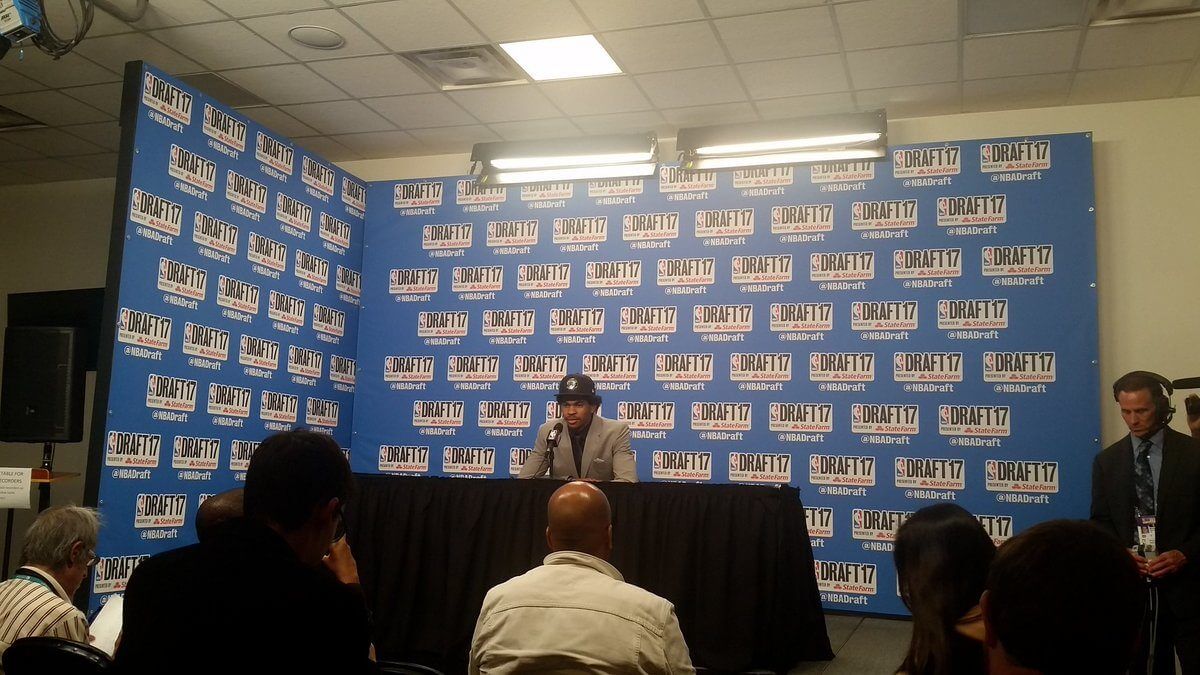
At only 19 years of age, Allen still has a lot of time to grow. Think of it this way; entering his fifth season in the league he will be 24 years old. Playing four seasons at Villanova, Randy Foye was 27 going into his fifth NBA season. This draft was an unusually young one across the board, as half of the players selected in the first round were under 20 years of age.
In Allen’s projected draft range, there was perhaps no better team for him to be picked by than the Nets. Brooklyn is without a definitive starting center at the moment. With Brook Lopez out of the picture, this upcoming season marks the first time since 2008 that the team is not married to a starting center. As Kenny Atkinson stated in Allen’s introductory press conference, there will be a competition for the starting center spot throughout the offseason and training camp. With Timofey Mozgov coming off an injury while approaching age 31, and Justin Hamilton showing little in his few starts last season, Allen will be able to get big minutes (whether coming off the bench of starting) next season and play through his mistakes in a developmental culture.
At Last, Athleticism at the Five
After the Nets dealt Lopez on June 20, it became logical that the front office was going to target a center in the upcoming draft. In an interesting twist, Marks went for a big man who plays a polar opposite style to Lopez. In the modern-day NBA, there are two types of centers; one that plays with skill and one that plays with a tremendous amount of will. In the Nets case, Lopez would be the former and Allen would be the latter.
In looking at the category of bigs Allen falls into, DeAndre Jordan is the pinnacle. Everyone knows about his plethora of shooting shortcomings, however, this seems to be a staple of uber-athletic big men. Given Atkinson shooting based offensive system, expect the Nets’ coaching staff to do everything in their power to ensure Allen develops range.
The former Longhorn can get above the rim, whether it be going up for a board or a powerful dunk. In a game against West Virginia this season, he threw down what was the pronounced the “dunk of the year” on the broadcast. A combination of this and his ridiculously long wingspan allowed Allen to dominate the paint in his time at the University of Texas.
At the combine, Allen finished favorably among his peers in the athletic testing portion of the event. He ranked in the top five for max vertical leap among big men and finished second in standing vertical among players who are projected to the play the five in the NBA. While he did not participate in portions of the combine, Allen excelled in the parts that he did.
Allen’s athleticism will be an interesting change in style for the Nets at the center position. Brooklyn’s center rotation last season included Lopez and Hamilton who are not exactly the quickest big men in the league. Going into the 2017-18 season, the Nets will likely still have Hamilton on his $3 million dollar expiring contract, in addition to adding Mozgov. Drafting a center who can defend pick-and-rolls well only adds more flexibility to Atkinson’s rotation. Depending on the opponent, the coaching staff could throw out a bruiser (Mozgov), shooter (Hamilton) or a center who possesses superb athleticism (Allen.) The Cavs, granted in a much different situation with much more talent, use this strategy with Channing Frye, and Tristan Thompson.
Logically speaking, it would be wise to play a stretch four next to Allen while he develops a jumper. This would cancel out his shooting deficiencies, and open up the paint for Allen to operate on the boards. Perhaps this may be a priority on Marks’ agenda as July 1 approaches, but the answer is simpler than that route. Quincy Acy, who is on an extremely favorable contract, was on a mission to demonstrate his range towards the tail end of last season. He delivered, shooting 43 percent from three-point land in his time with the Nets. This presents some interesting lineup opportunities for next season with Acy hustling on both sides of the court, and stretching the floor offensively. Scouts have questioned Allen’s motor and lack of range, which may make Acy the perfect frontcourt running mate for him in the early portion of his rookie season.
Prospective Two-Way Versatility
When Allen is engaged on every possession, he can be the most exciting player on the court. When at his, he demonstrates above average defense, and the potential to be competent on offense. In looking at the peak of NBA greatness that is the Golden State Warriors, most of their rotation provides something on both ends of the court and is not limited on offense or defense. This kind of players is essential to have at any position in the modern day NBA.
First and foremost, Allen needs to go develop a more consistent jumper to become a two-way player. This is often a problem with raw big men coming into the NBA but could especially be a downfall for Allen with the Nets. It’s arguable that Brooklyn’s biggest asset offensively last season was their big men’s ability to stretch the floor. Over the course of the Nets’ 7-10 record in March, Lopez was extremely hot behind the arc, averaging two threes a contest on 37 percent shooting. Atkinson’s offense was at its best when the Nets’ big bodies were scorching from three-point land.
Allen showed potential last season to develop a reliable mid-range shot (particularly in his best game of the season against Kansas), but it needs to be refined greatly at the next level. His stroke is far from broken and can be classified smooth and workable. Perhaps shooting specialist and assistant coach, Adam Harrington, can help Allen develop a consistent 15-20 foot jumper. This would make him a unique type of center in the NBA; one who is fluent athletically while having the ability to stretch the floor offensively.
Defensively, Allen has a solid base to eventually have the ability to guard all five positions. When fully invested, he moves his feet well and has good running mechanics. Having a 7-foot, 6-inch wingspan also doesn’t hurt in guarding a multitude of different types of players. Of course, he will end up spending a majority of his time guarding fours and fives, but if he gets switched on to a guard as a result of a pick-and-roll, the outcome will be much different than when Lopez was put in this scenario. Allen will, at the very least, be able to stay in front of quicker players.
Allen’s shot blocking ability has one of the more tantalizing aspects of his game. He blocked the sixth most shots of any player the Big-1 and ranked seventh in block percentage. All in all, Allen should excel over time in this area. When a player coming into the league has a longer wing span than Anthony Davis and Dwight Howard, it is hard to imagine him not being an above average shot blocker.
Sky-High Potential
In the weeks and months leading up to the 2017 NBA Draft, one angle for the Nets was blatantly obvious. With the worst record in the league and only one pick in the 20s to show for it, the team needed to take a player with a sky-high ceiling. Lucky for Brooklyn, Allen has just that as NBAdraft.net gave him one of the higher ratings among prospects for potential.
It is very unclear at this point what Allen will be at the next level. Will he improve to the point where he is one the better athletic bigs in the NBA or will he turn out to be Sean Williams? There is a strong case to be made that he will become a starter at some point in his career.
In comparing Allen’s colligate career to one of the elite interior forces in the NBA, there are some eerie similarities. It is tough to tell the difference between Allen’s and DeAndre Jordan’s per 40-minute stats in college. Jordan, who was also a one and done in college, put up 15.8 points and 11.9 boards per 40 minutes while Allen averaged 16.7 points and 10.5 rebounds per 40 minutes. Furthermore, Jordan was also projected to be a lottery pick for most of his freshman year, but his stock fell as his game was scrutinized time and time again by scouts. The former First Team All-NBA selection does have marginally better glass eating abilities and 15 pounds on Allen, but the similarities in their colligate careers are present.
While Allen still has to put in a lot of work before becoming a reliable NBA player, he is a bit more than just “6-11 piece of silly putty,” as Fran Fraschilla frequently says in describing raw big men. Allen has already accomplished some impressive feats for a 19-year-old. The Big-12 conference boasts some of the best centers and power forward in all of college basketball; this provided valuable experience for Allen last season. Among these superb big men, Allen was able to finish second in field goal percentage and third in rebounds in the conference. He also had the opportunity to lead a team in front of the some of the most passionate fan bases in the NCAA. Allen will be coming to Brooklyn much more experienced than a player such as Anzejs Pasecniks who has been playing in a small role in front of mediocre crowds overseas the past several months.
The downside of taking a chance on a player such as Allen is his low basement. There is the world in which he flames out of the league in three or four seasons due to showing little progression. However, it certainly won’t be because the Nets didn’t give him opportunities to succeed. Being selected by a team that let Sean Kilpatrick shoot 10 times a game last season, Allen should have no issue finding minutes and chances to show his progression. He will no doubt have more opportunities to play through his mistakes and progress than most players drafted in the 20s.

